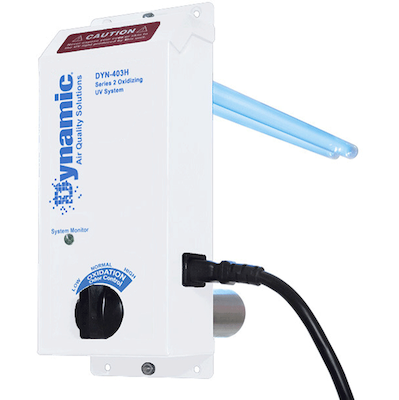Updated January 18, 2024

Most people are familiar with the traditional tank-based system for water heaters. However, a more efficient and space-saving alternative is the tankless water heater. In this article, we’ll explore the workings of a tankless water heater and answer some common questions about its operation.
How Does a Tankless Water Heater Work?
A tankless water heater, also known as an on-demand water heater, operates quite differently from its tank-based counterpart. Here’s a step-by-step breakdown of how it works:
- Cold Water Inlet: When you turn on a hot water tap or appliance, cold water from your supply line enters the tankless water heater.
- Heat Exchanger: Inside the unit, there’s a heat exchanger. This component is where the magic happens. Depending on your tankless water heater, it’s powered by gas or electricity.
- Heating Process: The heat exchanger rapidly heats the cold water as it passes through. This process occurs instantly, ensuring you get hot water on demand.
- Hot Water Outlet: The now-heated water flows out of the tankless unit and travels to your faucet, shower, or appliance, providing a continuous hot water supply as long as needed.
Common Questions About Tankless Water Heaters:
1. Do You Run Out of Water with a Tankless Water Heater?
No, one of the significant advantages of a tankless water heater is that it provides a continuous hot water supply. Unlike a traditional tank-based system, there’s no “running out” of hot water. It heats water on demand, so you can enjoy hot showers or fill a tub without worrying about depleting a limited supply.
2. How Long Does it Take a Tankless Water Heater to Provide Hot Water?
Tankless water heaters are known for their quick response time. The unit typically takes a few seconds to heat and deliver hot water to your faucet. This is much faster than waiting for a tank-based heater to warm up a large volume of water.
3. Why Does My Shower Get Cold with a Tankless Water Heater?
If you experience a sudden drop in water temperature during a shower, it might be because the unit is struggling to keep up with the hot water demand. Tankless water heaters have a maximum flow rate, which means they can only heat a certain amount of water per minute. Upgrading to a higher-capacity unit or installing multiple units can help address this issue.
4. Can a Tankless Water Heater Fill a Tub?
Yes, tankless water heaters can fill a tub, but the rate they do it depends on the unit’s flow rate and capacity. If you have a high-capacity tankless water heater, you should be able to fill a standard bathtub without issues. However, more giant tubs may require a higher flow rate or a more powerful unit.
In summary, tankless water heaters offer an efficient and convenient way to supply hot water on demand. They work by rapidly heating cold water as it passes through a heat exchanger, ensuring a continuous flow of hot water. While they can be a great addition to your home, choosing the right size and capacity to meet your hot water needs is essential.
If you’re tired of running out of hot water or want to upgrade your water heating system, consider the benefits of replacing a tankless water heater. It’s a modern solution that saves space and ensures you never have to retake a cold shower.
Contact Us Today for Plumbing Service!
If you found this post helpful, check out some other budget-saving tips:



